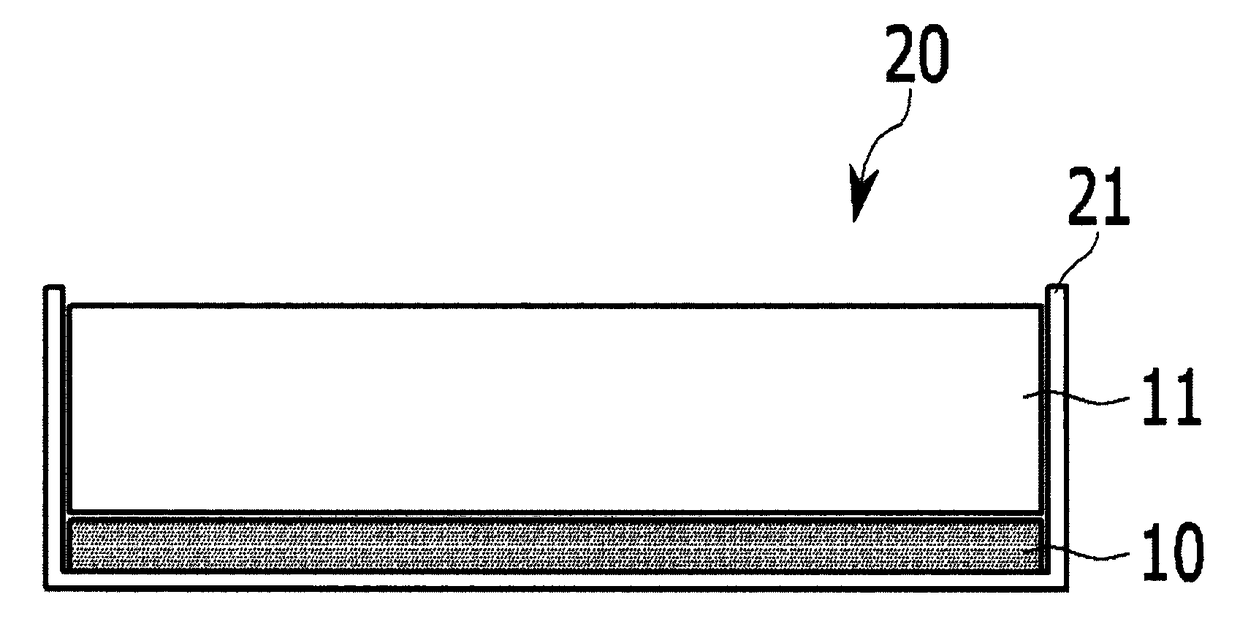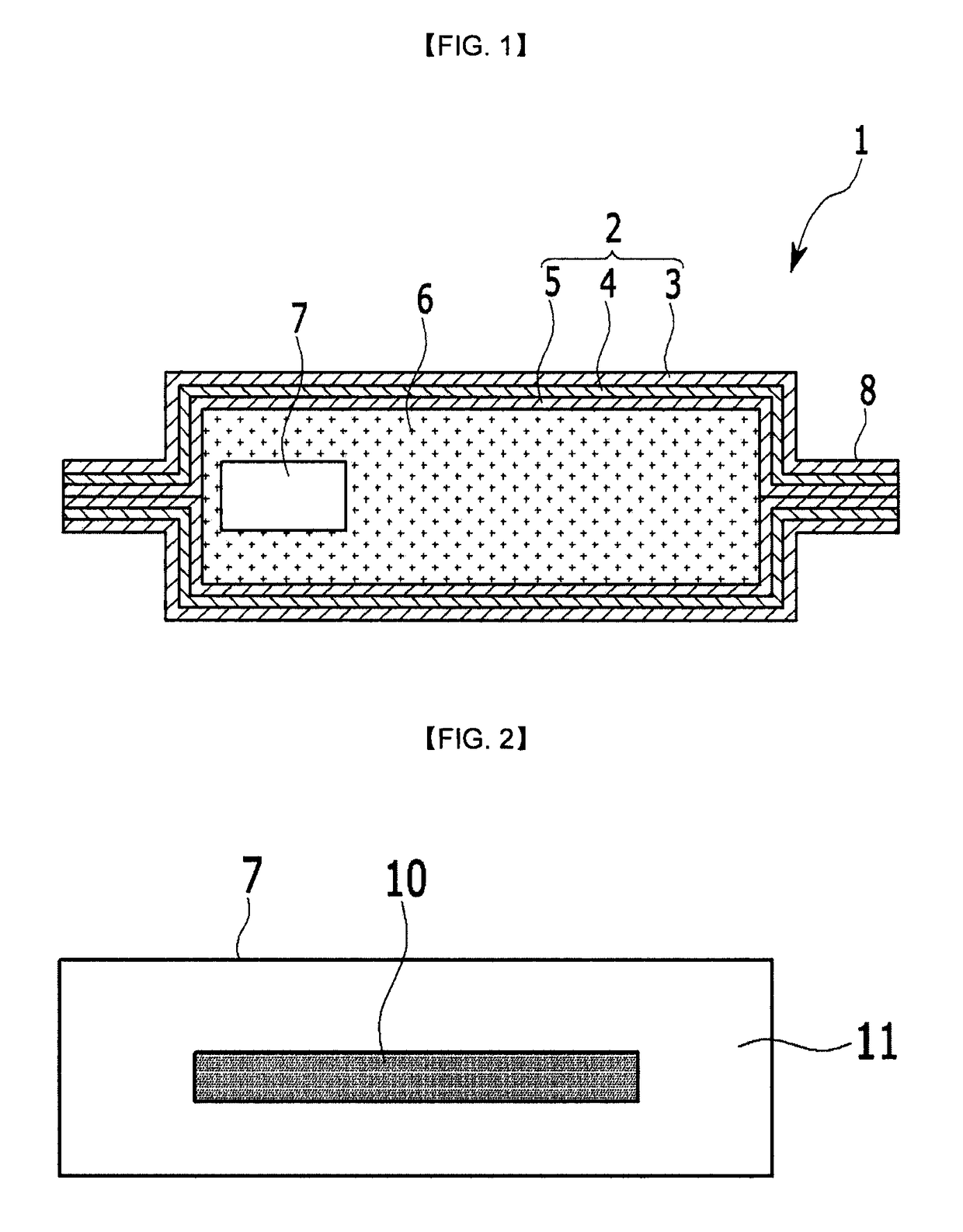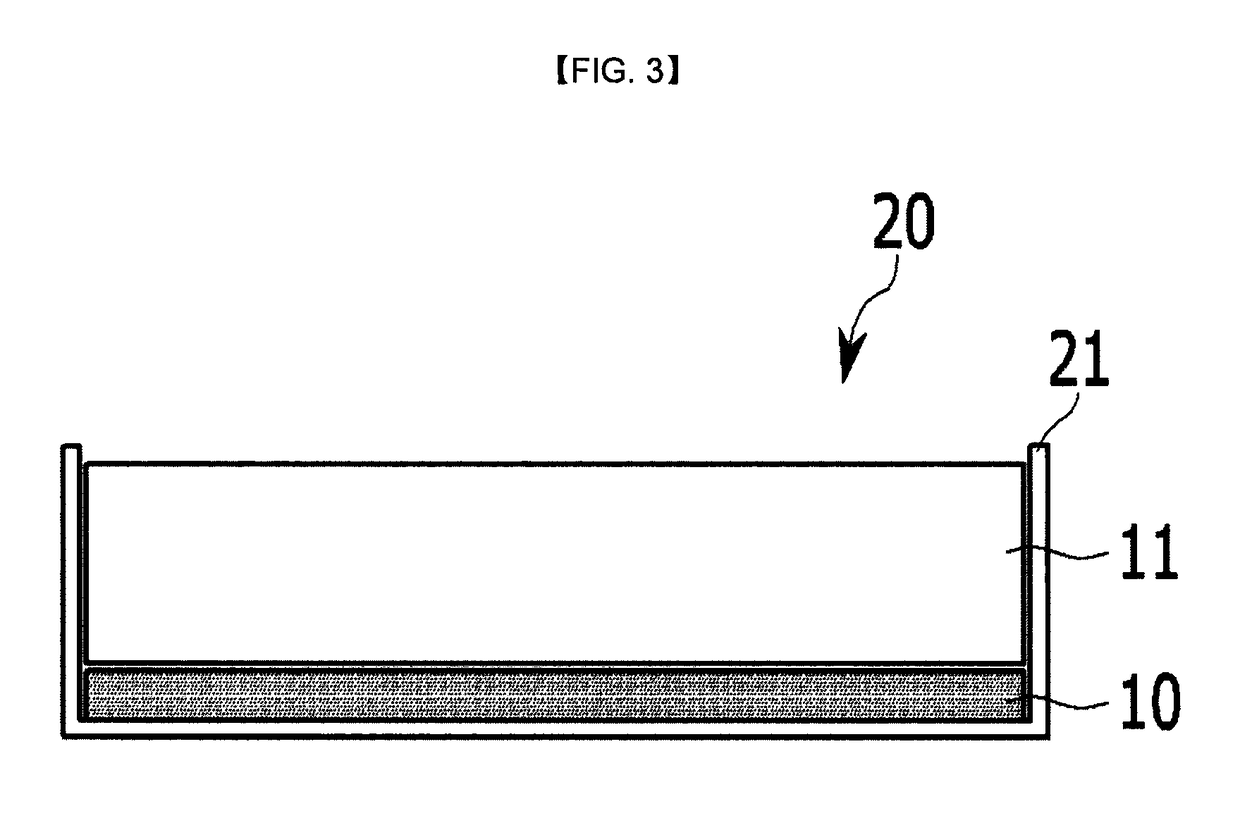Gas-adsorbing material and vacuum insulation material including the same
a vacuum insulation material and gas-adsorption technology, applied in the direction of mechanical equipment, other chemical processes, separation processes, etc., can solve the problems of molten and broken exterior materials, relatively high energy costs, and relatively complex, so as to reduce inactivation, reduce adsorption rate, and facilitate handling
- Summary
- Abstract
- Description
- Claims
- Application Information
AI Technical Summary
Benefits of technology
Problems solved by technology
Method used
Image
Examples
example 1
[0096]An article having solid density of 1.4 g / cm3 is manufactured by localizing copper ion-exchanged ZSM-5-type zeolite (Tosoh Co.) having a ratio of silica relative to alumina of 20.3 and copper-supported in an amount of 3.12 wt % in a part of a moisture-absorbing material having a BET specific surface area of 3 m2 / g and a secondary particle diameter of 100 μm, and compressing and molding a product therefrom at 120 kgf / cm2. Then, the article is vacuum calcinated to obtain a gas-adsorbing material according to Example 1.
[0097]When the nitrogen adsorption rate of the article according to Example 1 is measured, the result is 0.02 cc / min.
[0098]In addition, after the calcinating, the article has a dealuminization ratio of ratio of 15.8%.
[0099]The article has an adsorption capacity of 3.5 cc / gram.
[0100]The adsorption rate in each example and comparative example is measured according to a method of ASTM F798-97.
example 2
[0101]Ion exchanged ZSM-5-type zeolite (Sud-Chemie Inc.) having a ratio of silica relative to alumina of 47.4 is ion exchanged with a nitric acid copper solution to be copper-supported in an amount of 2.95 wt %, and then vacuum-dried at room temperature. The obtained copper ion exchanged ZSM-5-type zeolite is localized in a part of a moisture-absorbing material having a BET specific surface area of 10 m2 / g and a secondary particle diameter of 100 μm, compressing and molding a product thereof at 100 kgf / cm2. Then, the article is vacuum-calcinated to manufacture an article according to Example 2 having solid density of 1.2 g / cm3.
[0102]When the nitrogen adsorption rate of the article according to Example 2 is measured, the result is 0.02 cc / min.
[0103]In addition, after the calcinating, the article has a dealuminization ratio of 17.8%.
[0104]The article has an adsorption capacity of 2.8 cc / gram.
example 3
[0105]Ion exchanged ZSM-5-type zeolite (Tosoh Co.) having a ratio of silica relative to alumina of 11.5 is ion exchanged with a copper acetate solution to be copper-supported in an amount of 5.8 wt % and vacuum-dried at room temperature. Subsequently, the obtained copper ion exchanged ZSM-5-type zeolite is localized in a part of a moisture-absorbing material having a BET specific surface area of 20 m2 / g and a secondary particle diameter of 10 μm, and compressed and shaped at 290 kgf / cm2 to manufacture an article having solid density of 2.0 g / cm3. Then, the article is vacuum calcinated to obtain a gas-adsorbing material according to Example 3.
[0106]When the nitrogen adsorption performance of the article according to Example 3 is measured, the result is 0.01 cc / min.
[0107]In addition, after the calcinating, the article has a dealuminization ratio of 36.0%.
[0108]The article has an adsorption capacity of 6.5 cc / gram.
PUM
| Property | Measurement | Unit |
|---|---|---|
| density | aaaaa | aaaaa |
| temperature | aaaaa | aaaaa |
| equilibrium pressure | aaaaa | aaaaa |
Abstract
Description
Claims
Application Information
 Login to View More
Login to View More - R&D
- Intellectual Property
- Life Sciences
- Materials
- Tech Scout
- Unparalleled Data Quality
- Higher Quality Content
- 60% Fewer Hallucinations
Browse by: Latest US Patents, China's latest patents, Technical Efficacy Thesaurus, Application Domain, Technology Topic, Popular Technical Reports.
© 2025 PatSnap. All rights reserved.Legal|Privacy policy|Modern Slavery Act Transparency Statement|Sitemap|About US| Contact US: help@patsnap.com



